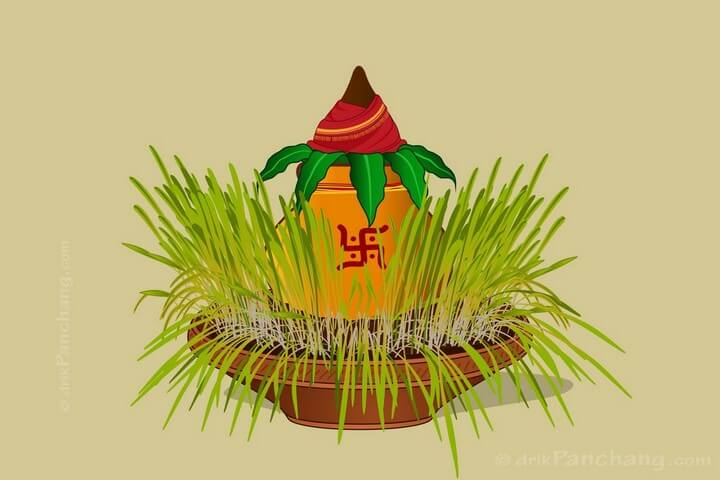Ghatasthapana, one of the most significant rituals in the Nepali Hindu calendar, marks the official commencement of the Dashain festival. This year, Ghatasthapana falls on Ashwin 17, kicking off the 15-day-long Dashain celebration, which is the most widely celebrated festival in Nepal. The day holds immense cultural and religious significance, as it symbolizes the invocation of Goddess Durga for protection and prosperity.
The word “Ghatasthapana” is derived from two words: “Ghat,” meaning a sacred vessel, and “Sthapana,” meaning establishment. On this auspicious day, households across Nepal perform a ceremonial establishment of the sacred Kalash (holy water vessel), which is considered the embodiment of Goddess Durga. The Kalash is placed at the center of a purified space filled with sand or soil, which is then used to sow barley seeds (Jamara).
The Kalash is worshipped throughout the festival, and the Jamara grows over the following days to be used as an offering to the Goddess during the main rituals. Devotees offer prayers and light oil lamps (Diyo) in front of the Kalash, believing it will invite blessings from Goddess Durga for the well-being of their families.
Ghatasthapana is a religious practice and a cultural cornerstone that marks the start of familial and communal celebrations. Dashain is a time when families unite, often traveling long distances to celebrate together. It’s a festival that promotes unity, peace, and prosperity, and it is observed by Hindus all over Nepal and in some parts of India.
In many rural areas of Nepal, Ghatasthapana is also a day for local fairs and gatherings. Traditional music, dance, and rituals create a festive atmosphere, connecting people to their cultural roots. Temples dedicated to Goddess Durga witnessed an influx of devotees during the Dashain period, with special prayers and offerings being made to seek the Goddess’s favor.
The broader Dashain festival symbolizes the victory of good over evil, particularly celebrating the triumph of Goddess Durga over the demon Mahishasura. The rituals of Ghatasthapana set the tone for the following days, culminating in Tika, the final day of Dashain, when elders bless younger members of the family with tika (a mixture of rice, yogurt, and vermillion) and Jamara.
As the first day of this grand festival, Ghatasthapana holds an essential place in the hearts of Nepalese people. It represents the beginning of a time for renewal, forgiveness, and joy, making it one of the most anticipated and celebrated events in Nepal’s cultural calendar.






